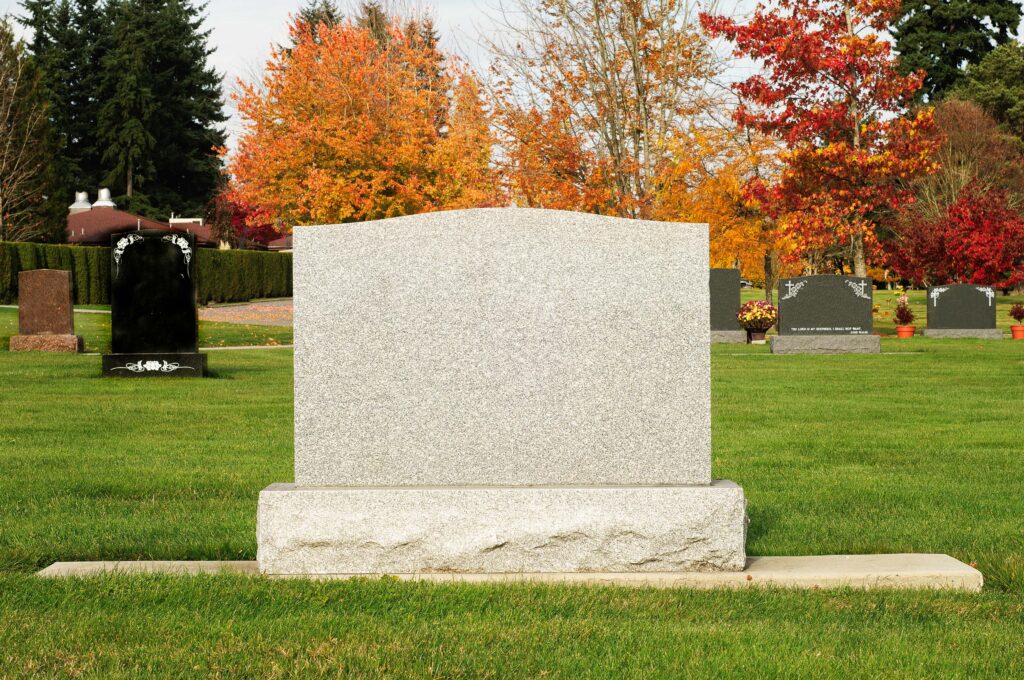When it comes to saying goodbye to a loved one, many families find themselves overwhelmed by choices and expenses. If you’ve ever grappled with the decision of how to honor someone who has passed away, you might be surprised to learn that direct cremation offers a sensible and compassionate alternative to traditional funerals. It’s not just about cutting costs; it’s about simplifying the process and focusing on what really matters: celebrating a life well-lived. With so many families seeking practical solutions during tough times, understanding direct cremation could make all the difference, freeing you from unnecessary stress while ensuring meaningful tributes to those we hold dear. Let’s dive into what direct cremation entails, explore its benefits, and see how it can help navigate this difficult journey with dignity.
Direct cremation is a simple and affordable process where the deceased is cremated shortly after passing without a traditional funeral service or viewing. This option allows families to avoid significant expenses while still honoring their loved one’s memory in a respectful manner.
What is Direct Cremation?
Direct cremation is essentially a no-frills approach to dealing with a deceased person’s body. Instead of hosting elaborate ceremonies with viewings or wakes—activities that can significantly elevate costs—direct cremation focuses solely on the cremation itself. After death, the body is quickly cremated, often within days, allowing families to bypass many traditional funeral rituals that aren’t essential for everyone. The absence of these formalities results in a lower price tag that appeals to many.
To illustrate this better, let’s examine the cost differences between traditional funerals and direct cremation.
While traditional funerals can set families back anywhere from $7,000 to $10,000, largely due to the expense of caskets, burial plots, and service fees, direct cremation offers a stark contrast. Depending on the provider and location, you can expect to spend between $700 to $3,000 for direct cremation services. This reduction in expenses is partly why many families find it an attractive option; they can respect their loved ones’ memory without incurring overwhelming financial stress.
It’s important to understand that even though direct cremation lacks the pomp of traditional funerals, it does not lack significance. Families still have the opportunity to celebrate their loved ones’ lives in their own way. For example, they may choose to hold a separate memorial service later on—perhaps in a favorite park or backyard—where they can share memories and stories as a tribute. This flexibility allows families to be creative rather than bound by conventional practices.
Many who have opted for this service share similar sentiments regarding its practicality and emotional clarity.
Take Jane D., for instance. She recently made the decision for her father’s handling through direct cremation. In reflecting on her choice, she expressed gratitude for being able to dedicate more resources toward an intimate memorial gathering instead of covering hefty funeral bills. Her experience highlights just how direct cremation enables families to focus on what truly matters—the celebration of life rather than navigating a maze of expenses and arrangements.
Understanding how these services function can empower families during grief-stricken times, simplifying decision-making processes while still honoring their loved ones meaningfully. With this knowledge in hand, we can now explore how the process unfolds step-by-step.
The Direct Cremation Process
The direct cremation process is designed to simplify what can often be an overwhelming experience for families. Starting with the essential initial contact, your journey begins when you reach out to a direct cremation provider, like Texas Affordable Cremation. This inquiry can happen day or night, offering flexibility as you face this challenging moment. Equipped with a website that provides online forms, they ensure that you are not alone and can initiate necessary arrangements from the comfort of your home.
After making that initial connection, the next crucial step involves ensuring the dignified transportation of your loved one.
Once arrangements are initiated, the cremation service will take care of transporting the deceased from their location—whether it’s a hospital, nursing facility, or even at home—to the crematory. This essential step typically occurs within 24 hours. Here again, Texas Affordable Cremation excels by including retrieval services as part of their comprehensive packages, relieving families of additional responsibilities during such a somber time.
Following safe transport, there are legal aspects that must be managed before proceeding with the cremation itself.
Families will need to navigate through some paperwork next. This includes filling out essential documents such as death certificates and authorizations for cremation. Though it may seem daunting amidst grief, completing these legalities is a vital part of moving forward with respect and dignity for your loved one’s wishes. Fortunately, many providers offer guidance in this crucial stage to ensure everything is handled correctly.
Once all legal requirements are fulfilled, we can discuss what happens during the actual cremation procedure itself.
After obtaining the necessary approvals, your loved one is placed in a simple but respectful combustible container before entering the cremation chamber. The delicate mechanics involved lead to a transformative process taking roughly 2-3 hours on average. However, durations may vary due to different equipment used or local regulations governing cremations. Throughout this time, rest assured that professionals uphold high standards of care and dignity.
As this important process concludes, understanding how remains are returned will help families prepare for their next steps.
Finally, once cremation is complete, the remains undergo processing into a fine consistency akin to sand. This final aspect leaves families with tangible memories and options for honoring their loved ones. Typically, cremains are returned in an urn or temporary container chosen by the family; this serves as a means to carry forth cherished memories.
Grasping each detail of this straightforward procedure can illuminate potential choices for memorialization afterward while ensuring dignity and respect remain central throughout the entire process. With these insights in hand, it’s crucial to also consider the administrative tasks required to officially manage your loved one’s affairs.
Legal Paperwork and Documentation

Navigating the world of legal documents after the passing of a loved one can feel overwhelming. However, being prepared with the correct forms can significantly ease the burden. The initial step begins with acquiring the death certificate, which is crucial for any further procedures. This document serves as the official record of death, delineating key information such as the date, place, and cause of death. Typically obtained from a hospital or coroner’s office, this essential form lays the foundation for the entire cremation process.
Required Forms
After securing the death certificate, attention turns to the cremation authorization form. This document must be signed by the legal next of kin, granting permission for the cremation provider to handle their loved one’s remains. This requirement not only protects families’ rights but also ensures that all parties agree to proceed with cremation.
Additionally, there may be several other necessary documents you’ll need to prepare before moving forward with direct cremation.
One vital document to have on hand is the burial transit permit, mandated for transporting the body. This form serves as proof that transportation has been authorized and documented properly. Failing to obtain this permit could lead to unnecessary delays in cremation.
Alongside this, an identification form is also required. This helps verify the identity of the deceased before cremation takes place, adding an extra layer of assurance that everything is handled correctly. Ultimately, these documents contribute not just to compliance with state regulations but also to maintaining respect for your loved one’s memory.
In Texas, there exists a 48-hour waiting period between death and cremation during which families can finalize these forms and ensure everything is in order. Taking care of this paperwork during those two days allows families to focus on supporting each other as they navigate through their grief.
Gaining clarity on these legal requirements facilitates a smoother cremation process, allowing families more time for honoring their loved ones instead of wrestling with bureaucracy as they cope with loss.
Comparing Costs: Direct Cremation vs. Traditional Burial

One of the primary reasons families choose direct cremation is the significant cost saving compared to traditional burial, allowing for a more budget-conscious approach during a sensitive time. The expenses associated with a traditional burial can be daunting. When you think about it, it’s not just about finding a plot in the ground—traditional burial involves several layers of costs.
Cost Breakdown:
1. Traditional Burial
Traditional burial expenses include essential components like a casket, which can easily cost $2,000 or more, and often necessitates embalming fees that add another $500 or so. However, that’s just the beginning. You also have to factor in funeral service costs, typically around $1,000 on average, along with the price of purchasing a burial plot that might set you back anywhere from $2,000 to $5,000 depending on location. Adding all these numbers together quickly pushes total expenses into the range of $7,000 to $10,000 or more.
2. Direct Cremation
In comparison, direct cremation offers an incredibly streamlined alternative at a fraction of that cost. This option generally covers everything necessary for the cremation service itself—which includes retrieval of the deceased and legal paperwork discussed earlier—along with a basic urn to hold the cremains. Prices generally range from $700 to $3,000, depending largely on your location and the specific services included by different providers.
| Expense Type | Direct Cremation | Traditional Burial |
|---|---|---|
| Service Provider Fee | $700 – $3,000 | $7,000 – $10,000 |
| Casket or Basic Urn | Included | $2,000+ |
| Embalming | Not needed | $500+ |
| Funeral Service | Not needed | $1,000+ |
| Burial Plot | Not needed | $2,000 – $5,000 |
While cost is a significant consideration—and many families find solace in selecting a simpler option—it’s equally vital to recognize how honoring loved ones’ memories goes beyond finances; it involves careful thought and planning that fosters meaningful tributes.
Memorial Services and Tributes
Although direct cremation may bypass the traditional funeral service, it doesn’t mean that families lose the opportunity to honor their loved ones. In fact, many families find the flexibility provided by direct cremation to be a beautiful advantage—it allows them to focus on what truly matters: celebrating the life that has passed. This celebration can take place at any time and in any setting, making it a unique experience tailored to fit the individual and their loved one’s wishes.
Flexible Memorial Options
The beauty of direct cremation lies in its ability to give families more control over the timing and type of memorial service they choose. Without the pressure to rush into arrangements typically associated with traditional funeral homes, families can take the time they need to plan an event that brings comfort and connection to everyone involved. They might opt for a day when family from afar can gather or select a season that holds significance in their hearts. This kind of planning allows mourning relatives and friends to heal at their own pace while creating a memorable tribute.
1. Timing
Since there is no immediate requirement for scheduling a memorial service with direct cremation, families gain invaluable flexibility. This aspect can help reduce stress during what is undoubtedly a difficult time; rather than hastily choosing a date, loved ones can reflect on significant dates or seasons that resonate with their shared experiences. When done right, this thoughtfulness transforms what could have been merely another obligation into a cherished remembrance.
2. Types of Tributes
The options for memorialization are nearly endless and can be as creative as you wish:
- Life Celebration: This format embraces a personalized event filled with music, photographs, and stories shared by guests that reflect on the deceased’s journey through life. It encapsulates emotions ranging from laughter to tears, showcasing the multifaceted nature of their spirit.
- Scattering Ceremonies: One might choose to scatter ashes at a meaningful location—perhaps a beloved park, serene beach, or tranquil garden—capturing the essence of who they were and where they found joy.
- Memory Book: Creating a memory book compiles cherished memories, photographs, and anecdotes from friends and family members. It serves as both a touching remembrance and a heartfelt keepsake that could be revisited through generations.
Sarah M., who planned her mother’s tribute said: “We held a beautiful celebration of my mother’s life in her favorite park. It was informal but deeply personal, and I felt it truly honored her spirit better than any traditional service could have.”
As showcased in Sarah’s example, these memorials are often richer and more fulfilling than conventional services because they resonate on deep emotional levels, celebrating individual lives instead of adhering strictly to traditions. Every tribute not only honors the departed loved one but also creates new stories among those left behind.
As we explore further, it’s important to understand how this choice impacts our environment and contributes to sustainability initiatives linked with cremation processes.
Environmental Considerations in Direct Cremation
Direct cremation is increasingly recognized as an environmentally conscious decision, primarily because it reduces the extensive resource use and land occupation inherent in traditional burials. For many families, opting for cremation feels like a step toward sustainability—a way to honor a loved one while also being kind to the Earth.
Eco-Friendly Aspects
One significant advantage lies in land use. Traditional graves occupy substantial amounts of land, leading to cemetery sprawl and habitat disruption. Imagine vast expanses of manicured lawns filled with headstones; all that real estate consumes land that could otherwise support local wildlife or remain in its natural state. In contrast, by choosing direct cremation, a loved one’s ashes can be kept in a small urn or scattered over a meaningful location, using significantly less space and preserving land for nature.
Another vital consideration is resource use. The process of traditional burial often involves embalming chemicals that are potentially harmful and polluting; these substances can leach into the soil and water systems over time. Additionally, traditional burials require heavy materials, like metal caskets and hewn wood coffins—resources that carry a hefty environmental cost both in sourcing and production. Did you realize that nearly 1,000,000 trees are sacrificed each year just for coffins? Direct cremation circumvents this problem entirely by eschewing such practices.
In fact, the Cremation Association of North America (CANA) reports that around 56% of Americans who have opted for direct cremation cite concern for the environment as their primary motivation. This statistic serves as a strong indicator of the growing trend towards eco-conscious thinking when planning final arrangements.
Choosing direct cremation not only presents an economical option but aligns with values surrounding environmental protection. As we consider how to approach this choice further, it’s essential to explore the details involved in making these arrangements effectively.
Planning for Direct Cremation
Pre-planning your direct cremation is not just about logistics; it’s a compassionate way to ensure your wishes are honored while minimizing stress for your loved ones. By laying down clear steps, you can create an organized plan that reflects your values and desires.
Starting off, it’s essential to research reputable cremation services, such as Texas Affordable Cremation, which offers transparent pricing and dependable services without hidden fees.
1. Documentation
Having clear documentation is paramount in making your intentions known. Your plan should include specifics like:
- The chosen cremation provider
- Preferences for scattering or storage of ashes
- Details about memorial services if desired
I often suggest keeping a designated folder where all this information is compiled—this could be a physical folder at home or a digital document accessible to your close family members.
After all, clarity is kindness in these situations.
2. Financial Planning
Next comes financial planning, which might involve setting aside funds specifically designated for the cremation services. Consider prepaying for your chosen service, as this locks in current rates and protects your family from rising costs in the future.
Many people find it comforting to know their arrangement is financially secure, reducing potential pressures later on. Establishing a dedicated fund can provide an extra layer of reassurance for everyone involved.
Open communication with family members regarding these plans really matters. Sharing your thoughts ensures they understand and can uphold your wishes when necessary. Though this conversation can sometimes be difficult, imagine how relieved they will feel knowing exactly what you wanted without having to make decisions under stress.
One client shared their experience: “Pre-planning my direct cremation has alleviated my worries and provided me with peace of mind knowing my family won’t face an emotional burden over these decisions during an already tough time.”
As you understand more about the machinations of direct cremation—from documentation to financial preparation—it becomes easier to navigate this sensitive process, enabling families to make informed and respectful choices that honor their loved ones while accommodating their needs.
In essence, preparing for direct cremation provides comfort and clarity during challenging moments, ensuring that both your wishes and those of your loved ones are honored seamlessly.



